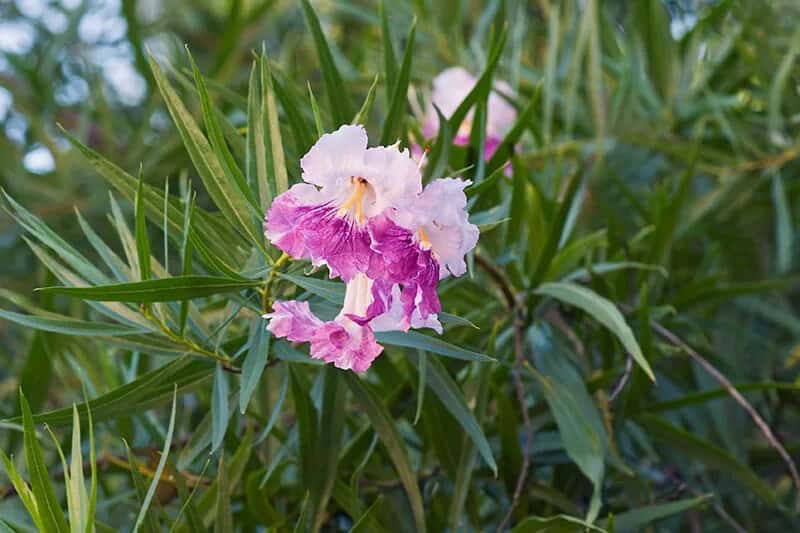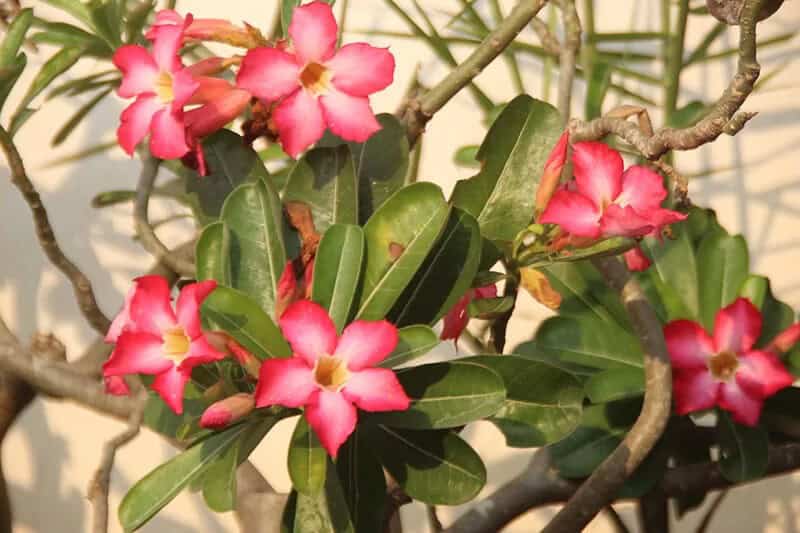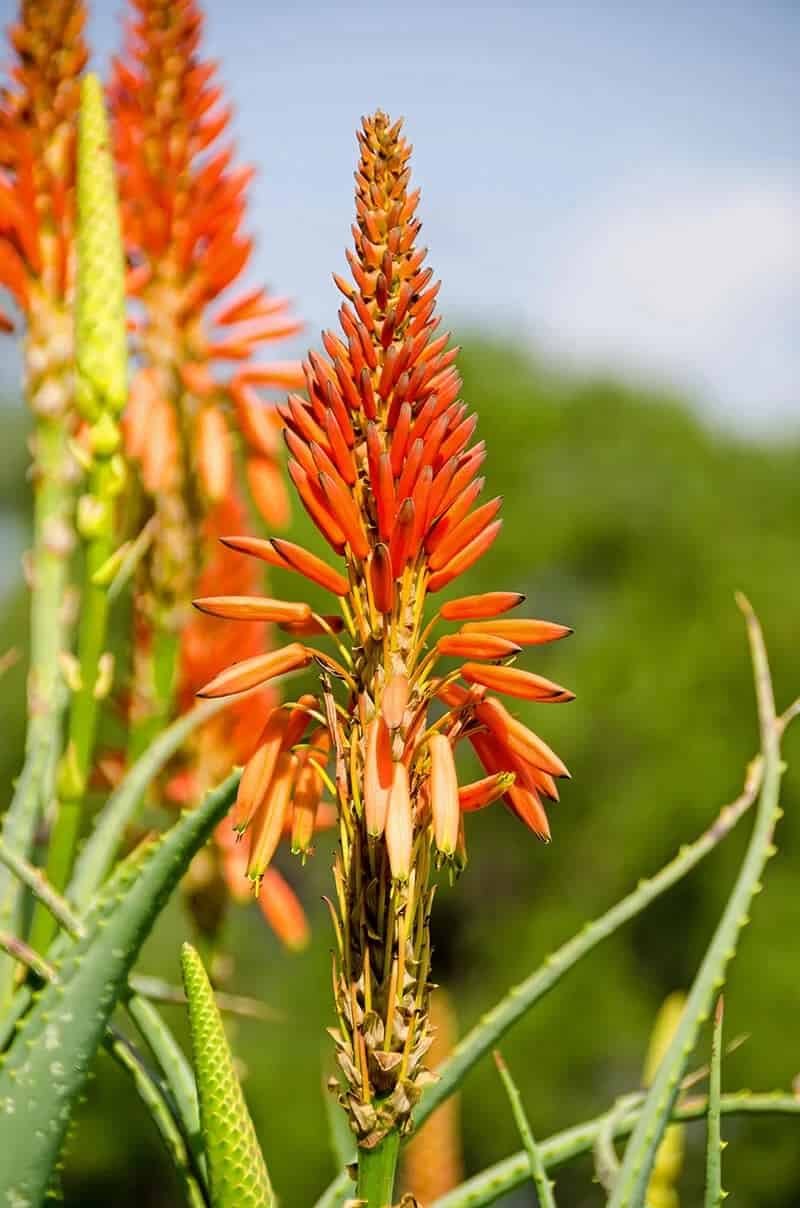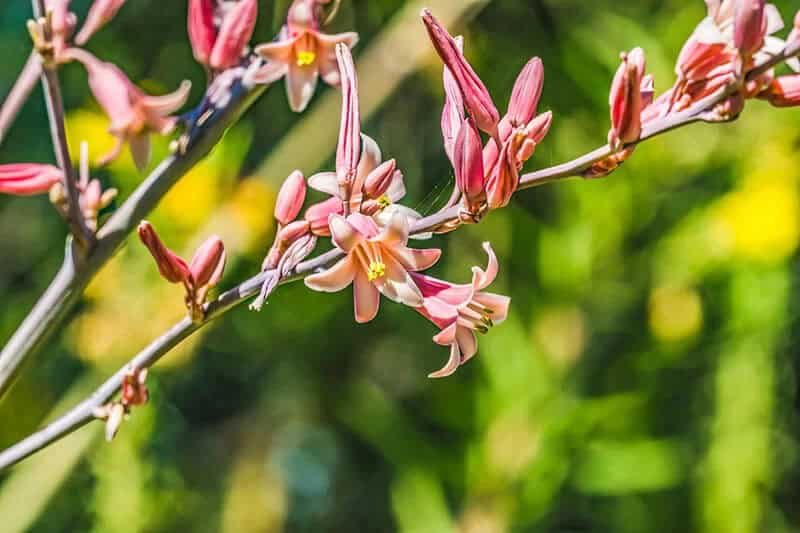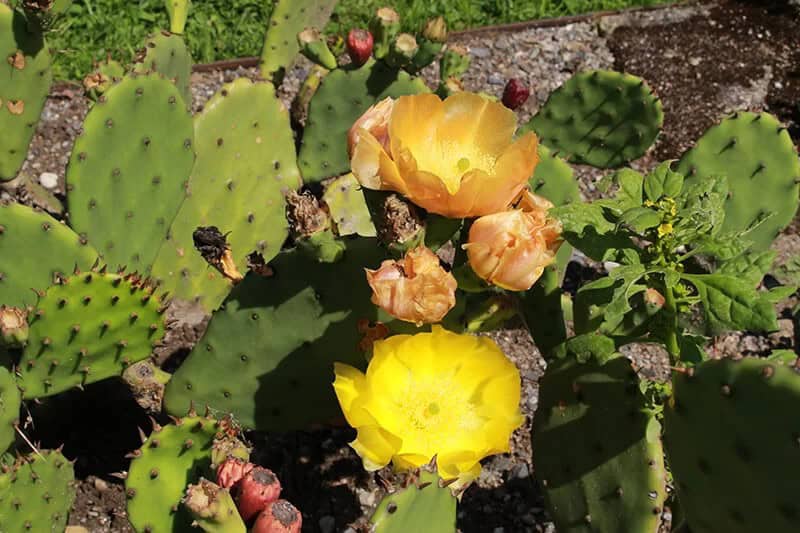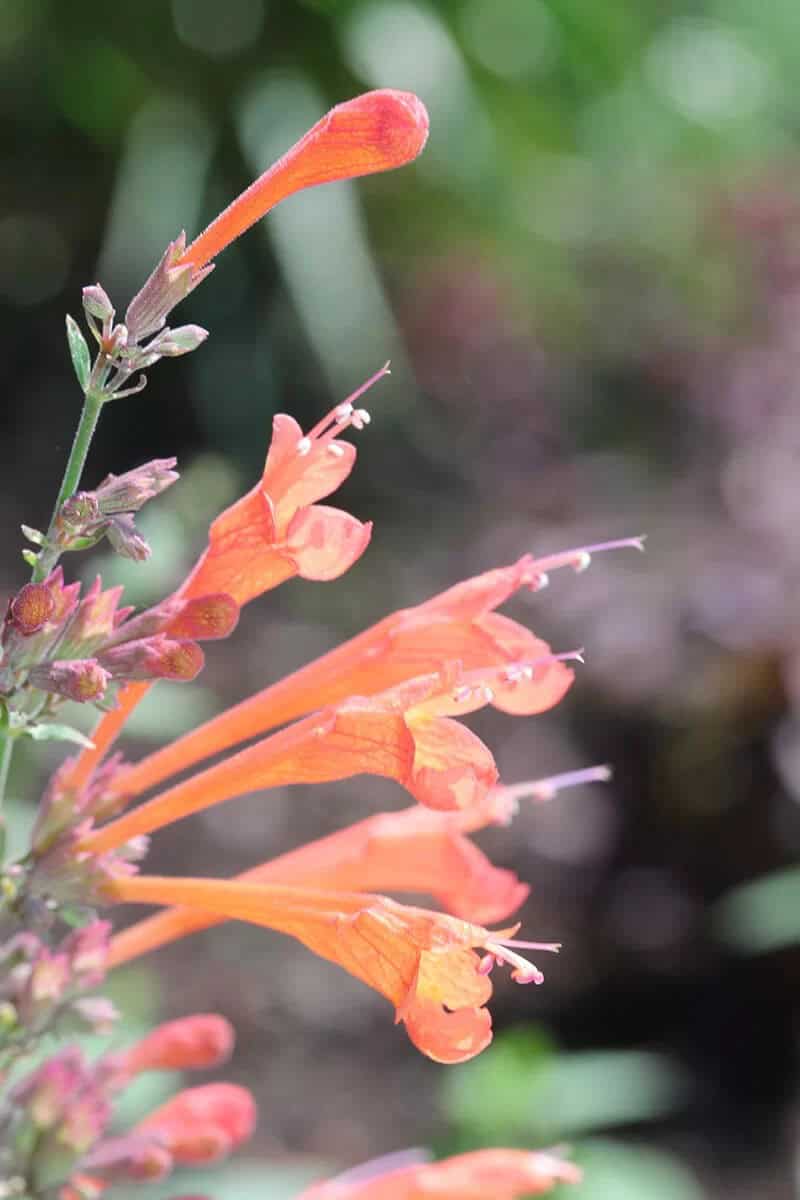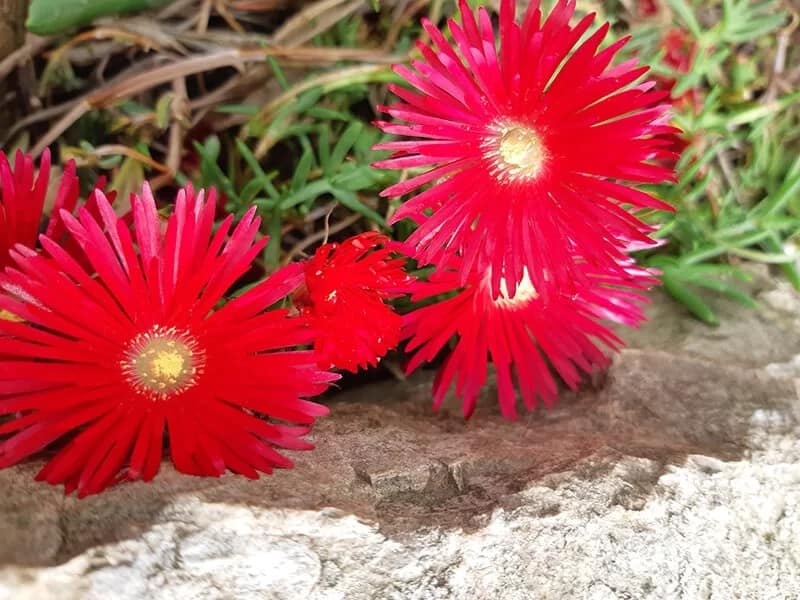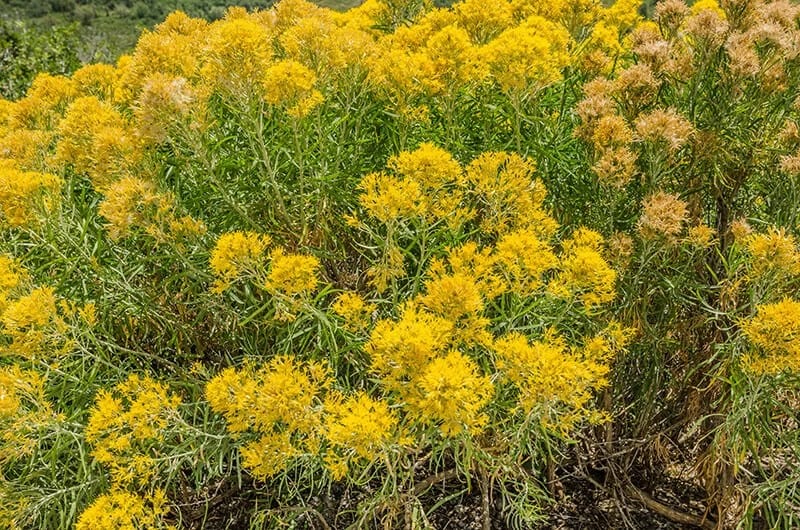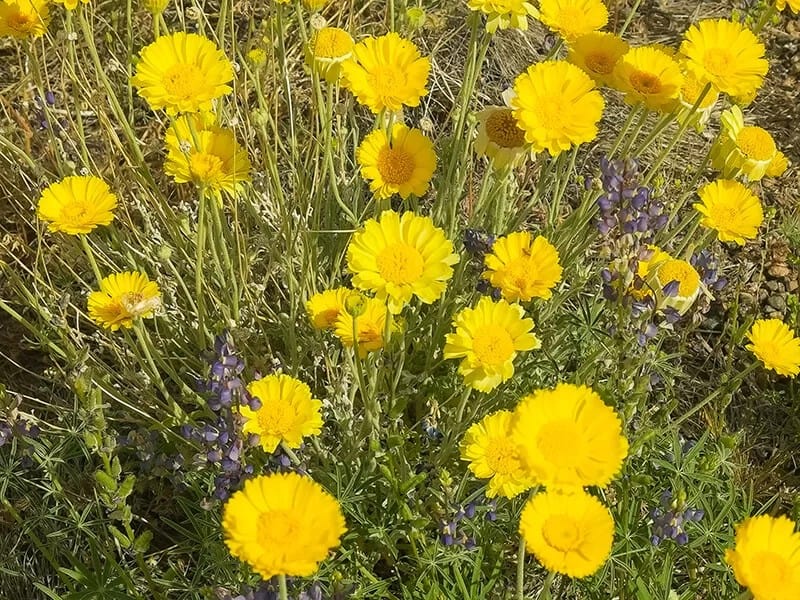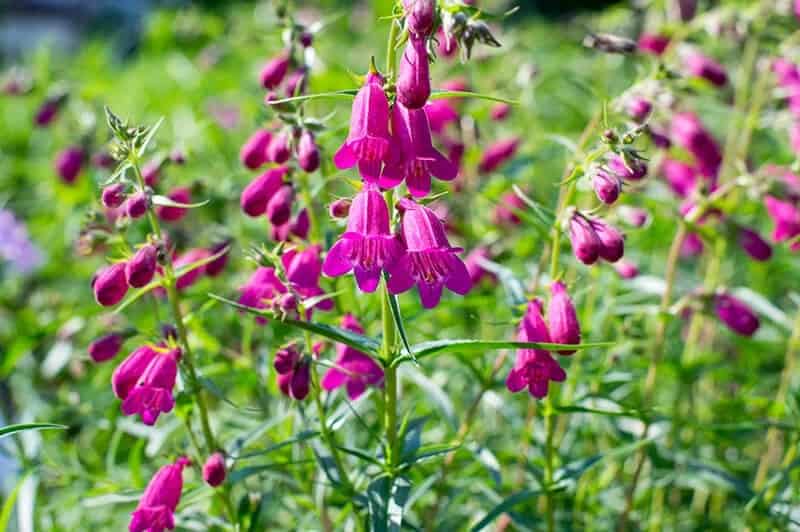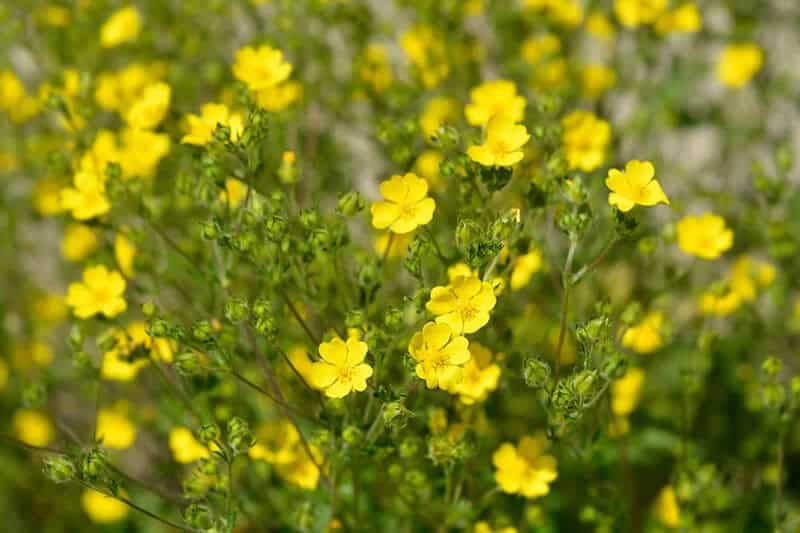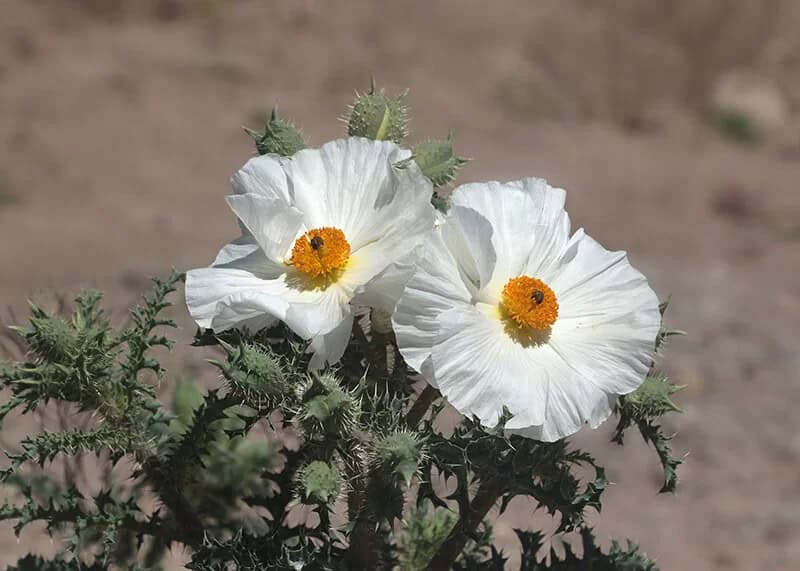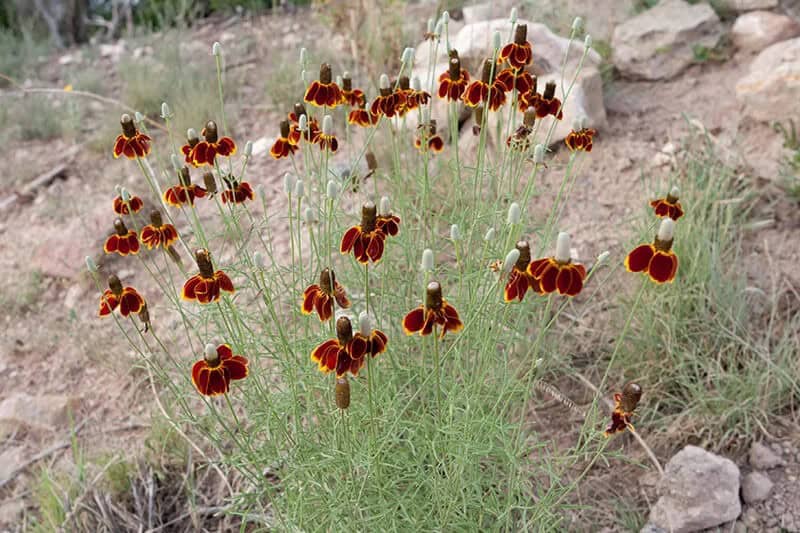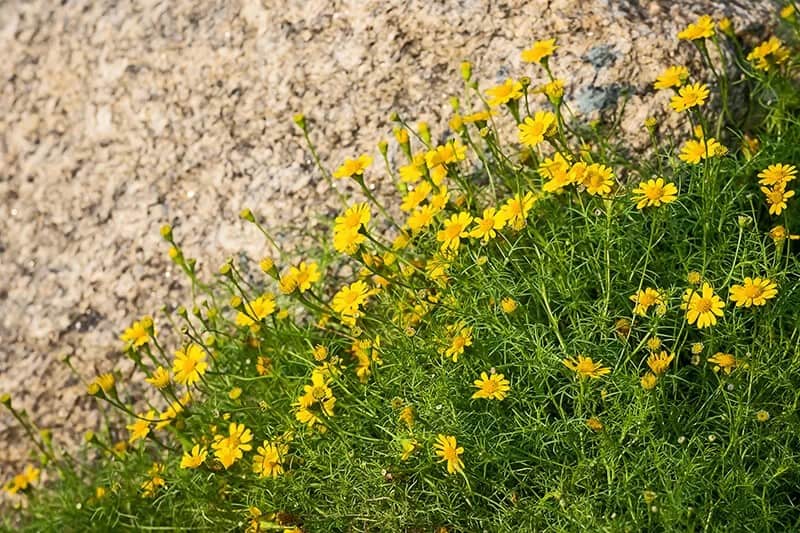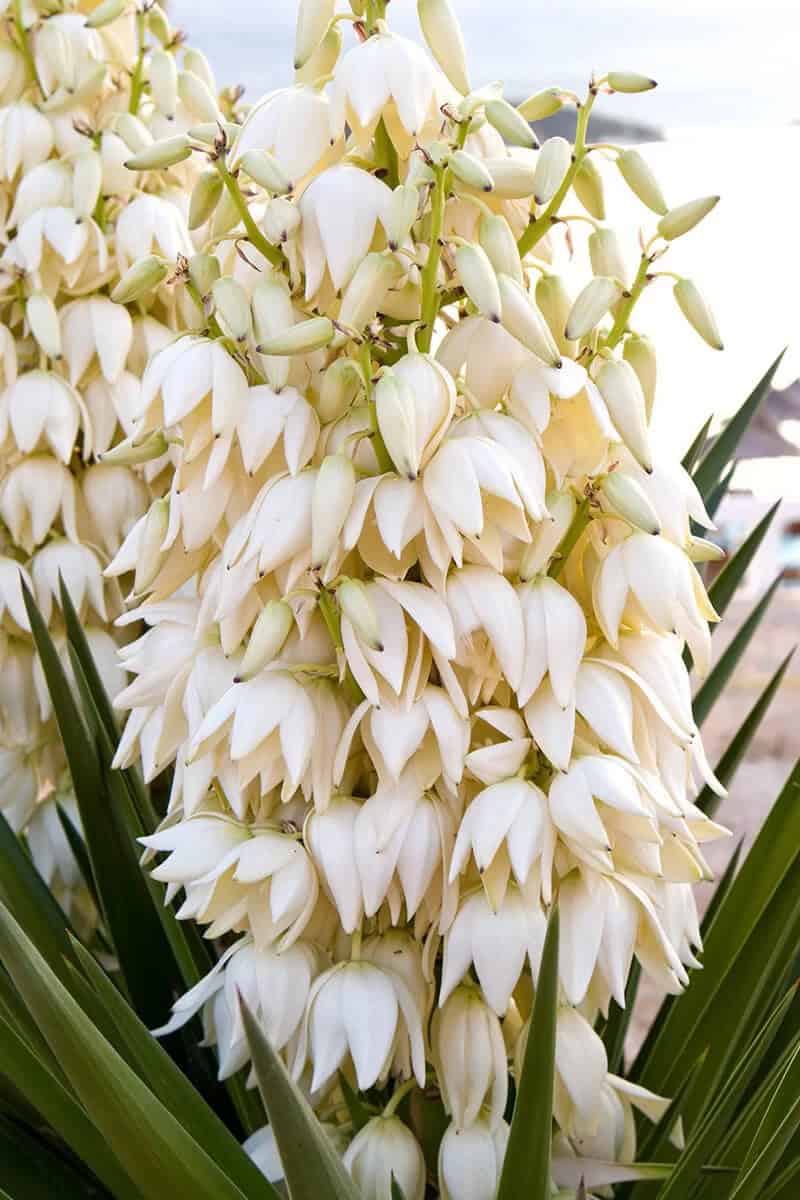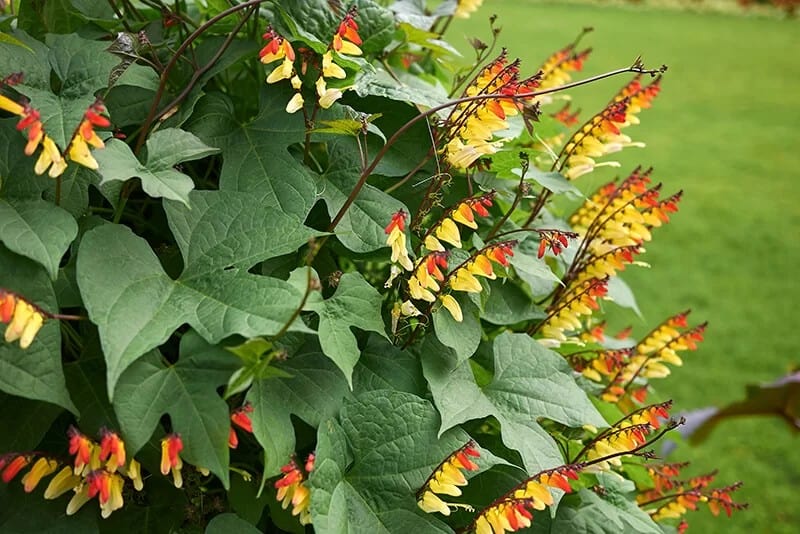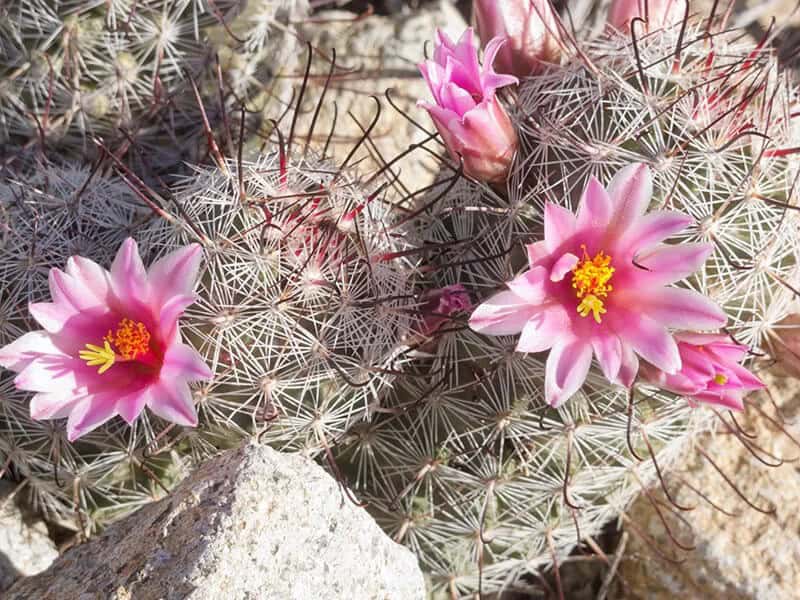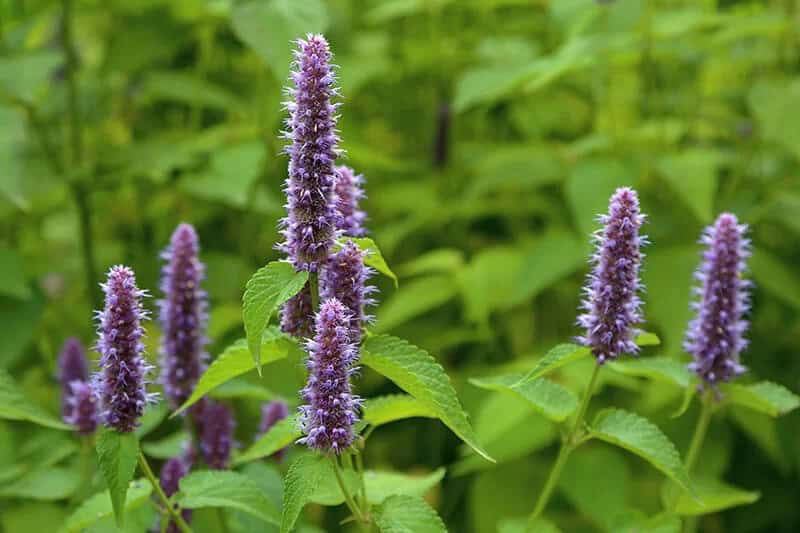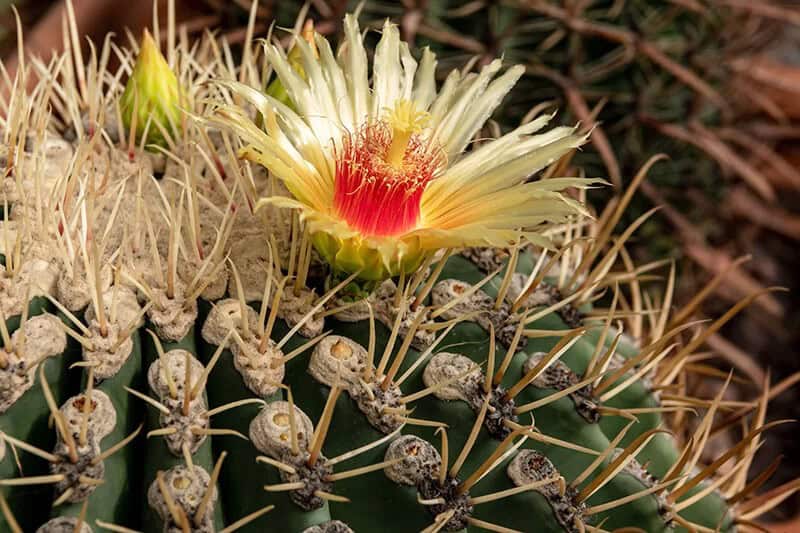While some may think that cultivating a garden in the desert would be a daunting task, the vibrant images of these resilient blooms reveal just how effortless it can be to create a serene oasis. Characterized by their bold colors and sunny dispositions, many species of desert flowers also carry uplifting symbolic meanings, making them even more alluring.
27 Low-Maintenance Desert Flowers to Plant in Your Landscape for a Constant Supply of Blooms
Harsh yet resilient, these desert flowers have adapted to thrive in diverse environments worldwide. As a result, they’re remarkably versatile and can flourish in a range of climates. For those residing in temperate zones with cool winters, many of these desert blooms can be beautifully paired with evergreen trees, adding visual interest to your garden.
Meanwhile, for those living in arid regions, these flowers offer a transformative way to turn your outdoor space into a lush oasis that rivals the stunning landscapes of the deserts they hail from.
Desert Willow Shrub (Chilopsis Linearis Lucretia Hamilton)
While the desert willow may resemble its Salix counterparts, it’s actually more closely related to the Campsis genus, specifically trumpetcreeper flowers. This variety boasts smaller stature than its species counterpart, but makes up for it with the showstopping Fuschia-hued blooms that are sure to attract hummingbirds and butterflies to your garden. In fact, the trumpet-shaped flowers provide a unique welcoming feature for these pollinators, making it an excellent addition to any garden.
With its dry to medium water needs, tolerating drought with ease, and thriving in full sun with slightly-alkaline soil, this plant is perfect for those looking to bring a touch of serenity to their outdoor space. Whether you’re in USDA growing zones 6 to 9, the desert willow is sure to bloom beautifully from May to June.
Ice Plant (Delosperma Cooperi ‘Jewel of Desert Peridot’)
The ice plant’s symbolism extends beyond its striking appearance, as it also represents good luck, impassivity, and a connection to knowing the future. When it comes to growing conditions, this desert flower is surprisingly adaptable. It can thrive in dry environments with minimal watering, tolerating drought without complaint. However, it does require well-draining soil – sandy soils are ideal. As for its climate preferences, the ice plant grows best in USDA zones 5 to 10 and basks in full sun.
Blooming season typically falls between June and September, treating gardeners to an intense display of yellow and white flowers. In addition to its solo appeal, the ice plant is a fantastic groundcover option when planted as a mat-forming succulent, offering a tactile experience through its foliage.
Desert Rose (Adenium Obesum)
The desert rose, as depicted in photographs, is often characterized by its striking star-shaped flowers, which come in a range of vibrant red and pink hues. As a perennials succulent, it offers a dual charm – not only does it produce stunning blooms from June to August, but it also features an intriguing bulging stem that adds visual appeal year-round.
This adaptable plant thrives in environments with dry to medium soil conditions, tolerates drought, and prefers well-draining sandy or gravelly soil. Its ideal growing zones are 11 to 12, where it basks in the warmth of full sun.
Red Aloe (Aloe Ferox)
The red aloe’s unique characteristics make it an attractive addition to any desert garden. With its tubular orange-red inflorescences and striking blue-green foliage, this variety of aloe can add visual interest to your space. One of its standout features is its ability to grow up to six feet tall, making the eye-catching flower columns easily visible at eye level. As with many plants, the red aloe’s blooming season is influenced by rainfall and weather conditions, but it does bloom seasonally.
This low-maintenance plant thrives in dry environments and can tolerate drought-like conditions. Its soil requirements are specific, needing a sandy loam-type soil to grow well. If you’re looking for a unique flowering plant that can withstand the hot desert sun, the red aloe is an excellent choice. It’s also suitable for USDA growing zones 9-12 and prefers full sun.
Redflower False Yucca (Hesperaloe Parviflora)
Native to the Chihuahuan desert, this North American flower is a captivating addition to any garden, particularly for hummingbird enthusiasts. The intricate trumpet-shaped blooms, ranging from soft pink to vibrant red, are a stunning feature of each inflorescence. In cooler climates, the foliage takes on an attractive bronzy sheen, further enhancing its visual appeal. Even the flower buds themselves are aesthetically pleasing, showcasing the plant’s beauty in every stage.
This drought-tolerant species thrives in sandy soils with excellent drainage and basks in full sun. Its blooming period typically spans July to August, making it an ideal choice for gardeners seeking a low-maintenance yet visually striking addition to their outdoor space. With a growing zone range of 5 to 10, this charming flower is well-suited to many climates.
Prickly-Pear (Opuntia Humifusa)
The prickly-pear cactus is a standout choice for desert flower enthusiasts. Its bright yellow blooms and unique cactus foliage create a striking focal point in any garden. The cup-shaped flowers, which appear from June to July, are the perfect complement to the evergreen cactus pads that provide visual interest throughout the year. This drought-tolerant plant thrives in well-draining sandy or gravelly soil and full sun.
With growing zones ranging from 4 to 9, it’s an accessible addition to many gardens. Symbolically, the prickly-pear cactus represents humor, healing of wounds, and clearing the air, making it a thought-provoking choice for gardeners looking to add meaning to their outdoor spaces.
Hummingbird’s Trumpet (Zauschneria ‘Orange Carpet’)
Illuminating desert gardens through the summer and fall seasons, Hummingbird’s Trumpet (a sub-shrub) boasts striking orange flowers that attract hummingbirds with its trust-inspiring love and frugal nature. Standing at just six inches tall, this compact shrub thrives in full sun and tolerates dry conditions, making it an excellent choice for rock gardens or xeriscape landscapes with sandy or rocky soils that provide excellent drainage.
With a growing zone range of 5 to 9, this drought-tolerant beauty blooms from July to September, bringing a pop of color to arid environments.
Queen Victoria Century Plant (Agave Victoriae-reginae)
The century plant’s unique symbolism, reflecting long life, abundance, admiration, and regal qualities, makes it a fascinating addition to any garden. Despite its demanding growth requirements, this striking specimen can thrive in well-draining sandy soil and full sun. In fact, it’s surprisingly drought-tolerant and can survive with minimal watering.
When the time is right – typically between May and August – the plant rewards patience with an impressive 10-15 foot spike adorned with a vibrant cluster of yellow-green flowers. The foliage itself is also attractive, featuring a striking white stripe along its edge, providing visual interest until the highly anticipated blooming season arrives.
Livingstone Daisy (Dorotheanthus Bellidiformis ‘Mesbicla’ Mezoo Trailing Red)
Livingstone daisies, native to the sweeping expanses of Africa, possess a unique ability to thrive as a groundcover in arid desert gardens. Characterized by vibrant colors and multiple petals, these desert blooms are a sight to behold. In cooler climates, they can be cultivated as a summertime annual, providing a burst of color during the warmest months.
Rubber Rabbitbrush (Ericameria Nauseosa)
The rubber rabbitbrush, although not typically a showstopper in terms of aesthetics, still offers significant value to any garden. Its unique ability to thrive in poor soil conditions makes it an excellent choice for filling gaps and creating a lush backdrop for other desert flowers. The plant’s high tolerance for dry soils allows it to spread freely, producing clouds of bright yellow blooms that can help draw attention away from the more eye-catching plants.
With its adaptable nature, this desert flower can be grown in USDA zones 4-9, and enjoys full sun with moderate water needs.
Texas Barometer Bush (Leucophyllum Frutescens)
The Texas barometer bush is a striking addition to any desert garden, with its blooms bursting forth after a rainfall, regardless of the time of year. Its foliage boasts an enchanting silver-green hue, making it a stunning visual element when planted as a hedge in your landscape. But what’s even more fascinating about this desert flower is the symbolism behind it.
The Texas barometer bush is said to symbolize impending good fortune, best of luck, and joyfulness, making it a thoughtful addition to any outdoor space. When it comes to growing conditions, the Texas barometer bush requires dry to medium levels of water, gritty soil with excellent drainage, and full sun. Its ideal growing zones are 8 to 10, and it blooms most vibrantly after rainfall.
Whether you’re looking for a unique feature in your desert garden or simply want to add some whimsy to your landscape, the Texas barometer bush is an excellent choice.
Desert Marigold (Baileya Multiradiata)
Desert marigolds, with their vibrant gold hues, bring a touch of sunshine to even the most challenging environments. As a symbol of obedience and perseverance, these flowers remind us that beauty can emerge from hardship. Their unique characteristics make them an ideal choice for gardeners seeking low-maintenance yet stunning blooms. Not only do they thrive in dry conditions, tolerating drought with ease, but they also adapt well to sandy soils with good drainage, as well as poorer soil types.
With a growth range spanning zones 7-10, and part shade lighting requirements, these desert marigolds can be enjoyed from March to November. As the seasons unfold, each plant forms a neat mound, producing an abundance of flowers that will brighten up any space.
Beardtongue (Penstemon ‘Red Rocks’)
The majestic beardtongue, with its regal purple hue and bell-shaped blooms, is a sight to behold. More than just a visual treat, this perennial offers a wealth of symbolic significance, representing inner peace, longevity, and fruitfulness. Its ability to thrive in dry to medium conditions, tolerating drought with ease, makes it an ideal choice for areas with limited water resources. The soil itself is less of a concern, as beardtongue can grow well in average soils with good drainage.
With a hardiness zone range of 4 to 8, this adaptable perennial can be grown across a significant portion of North America. When it comes to light, full sun is the perfect setting for these flowers to truly shine. The blooming season typically runs from May to July, providing a vibrant display of color during the warmer months.
Whether you’re looking to add some elegance to your garden or simply seeking a hardy and low-maintenance addition, beardtongue’s ‘Red Rocks’ variety, with its two spires of red-pink flowers, is sure to impress.
Zulu Giant (Stapelia Gigantea)
The Zulu giant is a unique and fascinating addition to any desert garden, boasting massive starfish-shaped blooms that are sure to captivate. While these succulent flowers may not be the most fragrant, their unpleasant aroma means they’re best situated away from high-traffic areas in your garden. That being said, the Zulu giant’s striking appearance makes it a must-have for any gardener who appreciates collecting unusual and eye-catching blooms.
To thrive, this desert plant requires dry to medium water levels, tolerating drought with ease. It prefers sandy soil with good drainage and full sun exposure, making growing zones 9-10 ideal. In the fall, from September to October, the Zulu giant blooms in vibrant color, adding a pop of excitement to your garden’s late-season display.
Cinquefoil (Potentilla Gracilis)
The symbolism surrounding cinquefoil is deeply rooted in its association with motherhood, strength, and healing. Its friendly five-petaled blooms evoke a sense of warmth and comfort, much like a big hug. While it may not be the star of the show in terms of landscape design, this bushy flower adds a pop of bright yellow beauty to any setting. As for its growing requirements, cinquefoil thrives in medium-water conditions, tolerating drought but preferring average soils with good drainage.
It’s hardy enough to grow in zones 3 to 7 and can handle full sun. Its blooming season typically runs from June to July, making it a lovely addition to any garden or landscape.
Prickly Poppy (Argemone Polyanthemos)
The prickly poppy is a resilient flower that excels in challenging soil conditions. Its tolerance for dry to medium water levels and ability to thrive in sandy or gravelly soils with good drainage makes it an excellent choice for filling gaps in your garden. While its prickly foliage may cause skin irritation, the plant’s unique characteristic also deters wildlife from feeding on it.
With a growing range that spans zones 2 to 11 and full sun requirements, this flower blooms beautifully from June to August.
Mexican Hat Plant (Ratibida Columnifera)
The Mexican hat plant is a unique and vibrant addition to any space, bringing a sense of fun and energy. Its striking, hat-like shape is reminiscent of its coneflower relatives. As a desert flower, it’s no surprise that this species spreads quickly, making it a great choice for gardeners looking to add some visual interest. The plant’s burgundy petals, outlined in bright yellow, are sure to catch the eye.
But don’t worry if you’re not a fan of the bold color combination – the Mexican hat plant also comes in a solid yellow variety. With its ability to thrive in dry to medium soil and tolerate poor drainage, it’s a great option for gardeners with less-than-perfect soil conditions. It prefers full sun and can be grown in USDA zones 4-9, making it accessible to gardeners across the country. The plant blooms from June to September, providing a burst of color during the summer months.
Shooting Star (Thymophylla Tenuiloba)
Shooting stars are often associated with youthful energy and symbolism, much like their vibrant yellow flowers that burst forth in abundance during the summer months. These hardy annuals require dry to medium watering, tolerating drought conditions but not overly soggy soil. A sandy loam with good drainage is ideal for optimal growth. Native to regions with mild winters, shooting stars thrive in USDA zones 9 to 10 and relish full sun exposure.
The blooming season typically spans from June until the first frost, with spent blooms requiring removal to promote continued flowering.
Wright’s Desert Honeysuckle (Anisacanthus Quadrifidus var. Wrightii)
Wright’s Desert Honeysuckle boasts a striking orange-red hue, making it an ideal choice for showcasing its vibrant beauty in low-water landscapes. This drought-tolerant shrub thrives in dry to medium conditions and can even survive with minimal watering. Its ability to tolerate poor soils and clay soil makes it a versatile option for gardeners.
Native to rocky outcrops and desert environments in south Texas and Mexico, the Wright’s Desert Honeysuckle produces stunning blooms throughout the summer and fall seasons. With its full sun requirement and blooming period spanning June to September, this shrub is well-suited for gardens with warm climates.
Lace Aloe (Aloe Aristata)
The lace aloe, with its striking coral flowers, earns the nickname ‘torch plant’ due to its vibrant coloration. Its unique texture, featuring small white dots and fine hairs on the leaves, resembles intricate lace patterns in the desert landscape. This adaptable succulent thrives in a range of environments, from rocky terrain to sandy dunes, as long as it receives full sun to partial shade.
In terms of care, the lace aloe requires dry conditions, tolerating drought with ease, and excels in average soil with good drainage. Its blooming season typically falls between June and August, during which time its fiery flowers take center stage. With proper care, this resilient succulent will flourish in USDA zones 7 to 10.
Spanish Bayonet (Yucca Aloifolia)
The Spanish Bayonet’s understated charm belies its striking beauty. Its clusters of delicate, bell-shaped flowers are all the more remarkable considering its preference for well-draining sandy soils with low fertility. As a xeriscape favorite, this plant is ideal for those seeking white blooms to thrive in dry environments. Interestingly, the Spanish Bayonet’s leaves can be quite prickly, much like sharp-tongued words that can leave their mark.
In terms of its needs, this plant thrives in full sun and can tolerate a range of watering conditions from dry to medium. It’s also surprisingly adaptable when it comes to soil quality, able to survive with poor soils while still producing an abundance of flowers. If you’re looking for a low-maintenance yet striking addition to your garden or landscape design, the Spanish Bayonet is definitely worth considering.
With its blooming season stretching from June to September, this plant provides months of visual interest and beauty.
Sacred Datura (Datura Wrightii)
The symbolic significance of the plant is multifaceted, representing spiritual guidance for those who seek it. In some cases, it may serve as a subtle mask for individuals struggling with emotional pain or even madness. As for its horticultural requirements, this plant thrives in environments with low water needs. Sandy soil with excellent drainage is ideal, allowing the roots to breathe and absorb nutrients freely.
When it comes to growing zones, this plant is most at home in USDA regions 8 to 12. With regards to light exposure, it can tolerate a range of conditions, from full sun to partial shade. As for its blooming season, expect vibrant displays of color from May to November.
Firecracker Vine (Ipomoea Lobata)
If you’re looking for a vining plant to add some magic to your desert garden, consider the enchanting firecracker vine. This unique flower-bearing plant boasts bewitching blooms that are sure to captivate. As it’s related to the popular morning glory vine, firecracker vine thrives when provided with a structure to climb. Its quick-growing habit makes it an excellent choice for creating an annual screen or adding vertical interest to your outdoor space.
Hens and Chicks (Sempervivum Tectorum)
This striking succulent boasts brilliant pink flowers that harmonize with its evergreen foliage, creating a visually stunning display in any garden. One of the unique advantages of this plant is its ability to thrive in cooler climates, making it an excellent choice for gardeners living in zones 3-8. Even when it’s not in bloom, the attractive, purple-tinged leaves provide year-round interest.
As they don’t spread rapidly, consider companion planting with hens and chicks to create a charming arrangement. With its ability to tolerate poor soils and dry to medium watering, this succulent is remarkably low-maintenance. Its requirements are straightforward: full sun, sandy soil with excellent drainage, and temperatures that fall within the 3-8 growing zone.
This succulent’s symbolism is deeply rooted in domestic joy, serving as a symbol of protection from life’s storms and representing the perfect union of two people becoming one – much like the marriage between your best friend and your partner.
Pincushion Cactus (Mammillaria Grahamii)
While it’s easy to get caught up in the grandeur of tall desert blooms, don’t overlook the charm of smaller yet no less stunning flowers like the pincushion cactus. Growing just 8 inches tall, this diminutive desert dweller is a masterclass in subtlety, producing vibrant floral displays that can thrive even in harsh conditions.
With its low water requirements, tolerance for drought, and ability to flourish in sandy soils with excellent drainage, the pincushion cactus is an ideal choice for gardeners seeking stability and nourishment from their plants. As it basks in full sun to part shade, this tiny titan produces a stunning display of color between April and July, adding depth and dimension to any landscape when paired with larger plants.
Giant Hyssop (Agastache ‘Bolero’)
The majestic giant hyssop, with its column-shaped purple blooms, brings a playful touch to any garden. This low-maintenance plant thrives in well-draining soil and full sun, making it perfect for xeriscape gardening. With its moderate water needs, you can enjoy the benefits of this ‘plenty’ (as its Greek name suggests) without worrying about constant watering. The 12-18 inch tall flowers are also a great addition to any bouquet, offering a pop of color and whimsy to your arrangements.
Golden Barrel (Echinocactus Grusonii)
The golden barrel cactus is a highly sought-after addition to desert gardens due to its striking appearance and unique characteristics. As one of the most popular desert flowers, it thrives in full sun and sandy soil with excellent drainage, making it an ideal choice for gardeners looking to add some flair to their arid landscape. In the height of summer, this cactus truly comes alive, as a ring of golden flowers blooms around its crown.
The yellow spines and textured ribbing on the cactus itself only add to its visual appeal, offering an interesting tactile experience. With low water requirements and growing zones spanning from 9 to 11, the golden barrel cactus is well-suited for gardeners in regions with hot summers. Its blooming season typically runs from June to August, providing a burst of color and vibrancy during this time.
Whether you’re looking to add some bold statement pieces or create a cohesive look in your desert garden, the golden barrel cactus is certainly worth considering.
27 Gorgeous Desert Flowers to Plant for a Xeriscaped Paradise
Desert flowers thrive in conditions deemed harsh by many, yet their resplendent beauty belies the challenges they face. These resilient plants have adapted to arid environments, boasting unique characteristics that elevate their ornamental appeal. Beyond their striking visuals, desert flowers also convey symbolic meanings that can enrich your garden experience.
By selecting flowers with significance aligned with your own journey, you can cultivate a sanctuary that reflects your personal growth. Alternatively, if a flower’s aesthetic captivates you but its symbolism doesn’t resonate, feel empowered to create your own narrative around it. Whichever desert blooms you choose, your low-maintenance garden will become a serene oasis for rejuvenation and contemplation.
